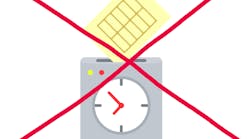Five Steps You Need To Follow To Protect Your Practice From a Network Disaster
by Lorne Lavine, DMD
OK dental divas, it’s time to drill the stereotype and start getting a grip on your practice technology. I've found that 9 out of 10 female dental practice owners are not conducting any type of proactive monitoring or correctly maintaining their network, leaving them completely vulnerable to numerous disasters.
I believe there are three primary reasons why dentists (of both genders) are not backing up their data:
- The importance of regular maintenance is unknown or misunderstood.
- If they do back up their data, it is often handled by a local tech who is not experienced with correctly backing up and protecting the data.
- They are already swamped with more immediate day-to-day fires demanding their attention. If their network is working fine today, it goes to the bottom of the pile of things to worry about. That means no one is consistently watching to make sure the backups are working properly, the virus protection is up-to-date, that critical security patches are being applied, or that the network is “healthy” overall.
Think about it…what would you do if a major storm, fire, thief or virus wiped out your practice and all your digital files? How quickly could you recover your network if at all?
Five smple steps to protect your practice
Step 1: Trade in your tape drive for remote backup. Tape drives fail on average 99% of the time and do not offer any protection of your data. That means all tape drives will fail at least once in their lifetime, often without any type of warning or signs of failure. Since tapes only back up your data, your programs, software, or personal settings are not saved.
Another problem with tape backup is that it relies on someone in your practice to remember to change the tapes. Not only is this a major inconvenience, but it leaves you wide open to human error, which is the No. 1 cause of data-erasing disasters.
Step 2: Check your backups on a regular basis to make sure they are working. It just amazes me how many practices never back up their computer networks. Imagine this: you write the most important piece of information you could ever write on a chalkboard, and I come along and erase it. How are you going to get it back? You’re not! Unless you can remember it, or if you made a copy of it, you can’t recover the data. It’s gone. That is why it is so important to back up your network every day. There are a number of things that could cause you to lose data files. If the information on the disk is important to you, make sure you have more than one copy of it.
Step 3: Keep an off-site copy of your backup. This is a safe way to make sure your business can get up and running in a matter of minutes! What happens if your practice gets robbed and they take everything? Having an off-site backup is simply a smart way to make sure you can get your practice back up and running in a relatively short period of time.
Step 4: Set up a firewall. There are thousands of people who can hack into your network and steal important files and private patient documents. These individuals strike randomly by searching the Internet for open, unprotected ports. As soon as they find one, they will delete files or even shut down your hard drive. They can also use your computer as a zombie for storing pirated software or sending spam, which will cause your ISP to shut you down and prevent you from accessing the Internet or sending and receiving e-mail.

